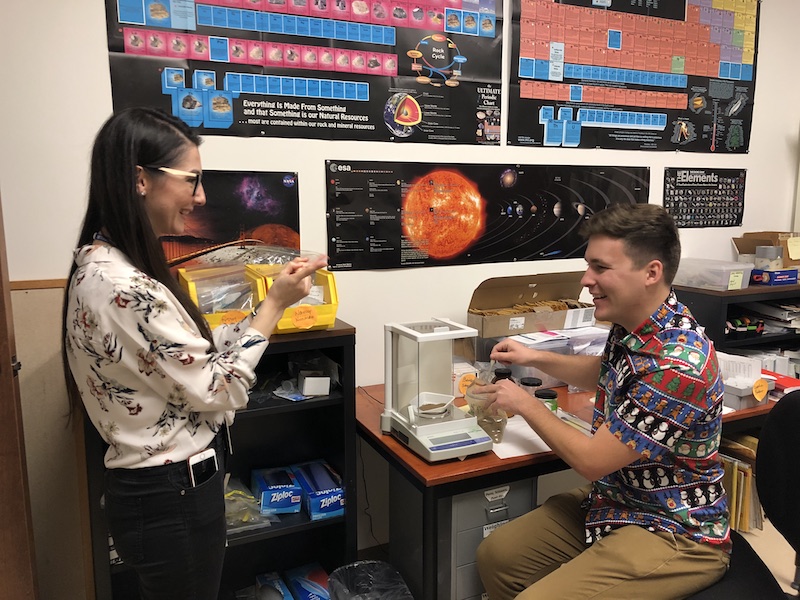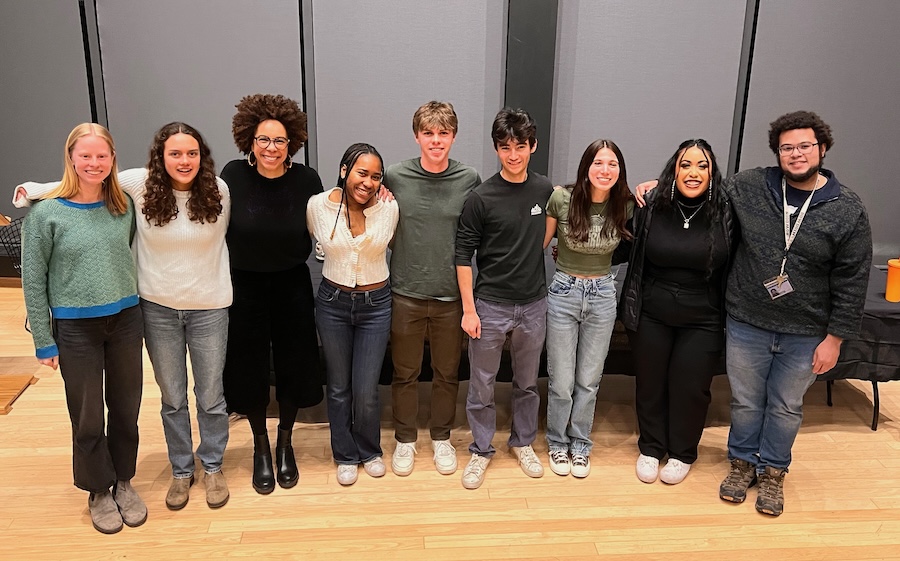Zack Burton ’14 Coauthors Paper on an Enduring Mars Enigma
By Rebecca Goldfine
The biggest clues for the team that Mars might contain secret stores of briny water were these mysterious landslides that have been observed from afar on the planet's arid surface.
Scientists have long been puzzled by this seasonal phenomenon, known as recurring slope lineae, or RSL, which is most common on sun-facing slopes in the equatorial zone of the red planet. Some have suggested the RSLs are caused by flows of grainy debris, dust, or sand.
But others thought differently. These "long-enigmatic" geological events on Mars "have been of particular interest and contention," Burton explained, as they present "possible evidence for liquid water on present-day Mars, which naturally is of central interest to questions of life—past or present."
Because no robotic explorer or orbiting spacecraft has managed to record RSL up close, scientists have had to adopt Earth-bound methods to study them.
Now, after years of investigation inside labs and at remote sites around the world, Burton's team—led by Janice Bishop of NASA's SETI Institute—has published a paper in Science Advances on a new explanation for the Martian landslides. (The article has stirred up a flurry of media attention from CNN, Popular Science, New Scientist, and others.)
In the article, "Martian Subsurface Cryosalt Expansion and Collapse as Trigger for Landslides," the researchers argue that thin layers of melting ice—caused by interactions between underground frozen water with chlorine salts and sulfates—form an unstable, flowing slush that instigates sinkholes, ground collapse, and surface flows and upheaves.
“I am excited about the prospect of microscale liquid water on Mars in near-surface environments where ice and salts are mixed with the soil,” Bishop said. “This could revolutionize our perspective on active chemistry just below the surface on Mars today.”
Their observations are backed up by events observed at other frigid and ultradry regions on Earth, including the Dead Sea in Israel and the Dry Valleys of Antarctica. Most of Burton's work with Bishop focused on studying sites on Earth (especially Antarctica) that are similar enough to Mars that they can reveal insights about its environment.
“The presence of elevated concentrations of sulfates and chlorides a few centimeters below the harsh surface landscape in Wright Valley presents the intriguing possibility that these water-related mineralogical associations and attendant processes could exist on Mars as well,” Burton said. Wright Valley is one of Antarctica's three Dry Valleys.
Zack Burton majored in earth and oceanographic science and German at Bowdoin, and just completed his PhD in geological and environmental sciences at Stanford University. He collaborated with Bishop at the SETI Institute and NASA Astrobiology Institute for three years as a volunteer research assistant. On January 4, he joined the science and engineering consulting firm Exponent, in Boston, as an environmental scientist.
Burton and his collaborators tested their theory in a lab, where they froze and thawed analogous samples of collected soil with chlorine salts and sulfates at low temperatures that would be found on Mars. The result was slushy ice formation near -50°C, followed by a slow melting of the ice from -40 to -20°C.
A CNN report on the findings explains that the experiments in the study support the notion that water on Mars billions of years ago could have filtered down into the subsurface, thawing and refreezing over time.
Bishop told CNN, "It could be that more of this early water on Mars persisted longer than we realized below the surface. If true, this could indicate that the subsurface of Mars was habitable longer than the surface environment. It is difficult to estimate how long, but perhaps liquid water was present around soil grains below the surface until three or two billion years ago, or even more recently."
In addition to helping explain Mars's geological and chemical processes, the team argues that its findings suggest the Martian environment is dynamic and evolving, "which has implications for both astrobiology and future human exploration. The potential for thin films of water below the surface on Mars in salty permafrost regions opens new doors to understanding chemical processes active on Mars today."


- Anne T. and Robert M. Bass Professor of Natural Sciences Rachel Beane: "My first exposure to planetary science was with Rachel Beane, when she organized a research project in which we got to examine and perform chemical and mineralogical analyses on meteorites in Bowdoin's collection."
- Professor of Earth and Oceanographic Science Collin Roesler: "My first exposure to remote sensing, which forms a core component of the data sets examined in this new paper (and of our knowledge of the composition of the Martian surface, in general), was in examining the temporal evolution of phytoplankton blooms in the Gulf of Maine."
- Associate Professor of Earth and Oceanographic Science Emily Peterman: "My first true research experience was through a summer fellowship and then an honors project with Emily Peterman, studying the evolution of the Appalachian Mountains via geochronology and trace element geochemistry. Emily really showed me that there could be a place for me in contributing as a scientific researcher, and it was during my work with her that I applied to grad school—and actually started to believe that, maybe, I too could become a scientist!"
- The Bowdoin SEM (scanning electron microscope): "We had a former Alaskan gold miner come in with a couple specimens he thought might be meteorites. We walked him through the basics of what we were looking for as we put his treasured objects into the SEM one by one. The first was more easily identifiable as a piece of basalt, but to this day I allow myself to believe that the other was actually a Revolutionary War-era cannonball."



